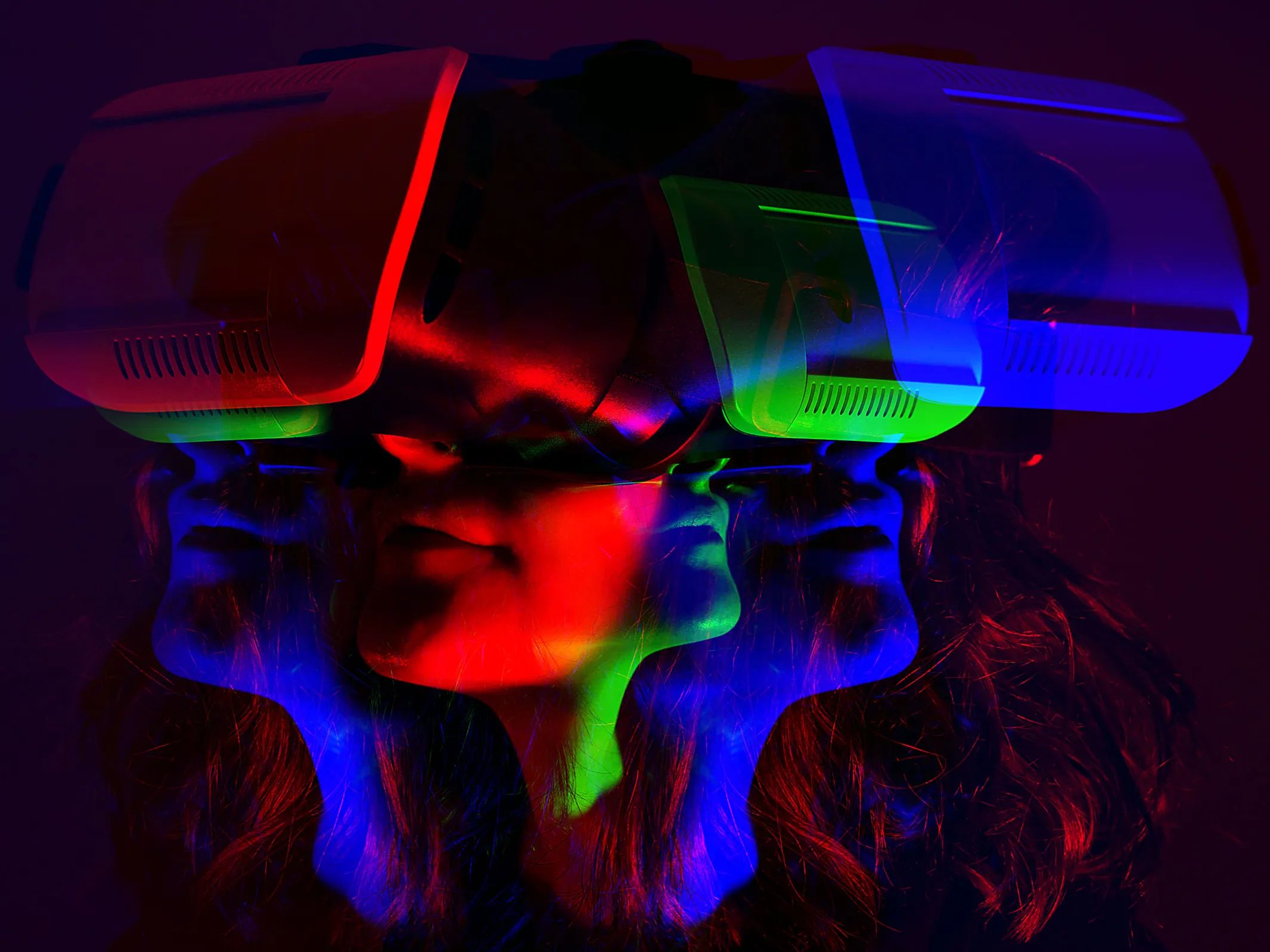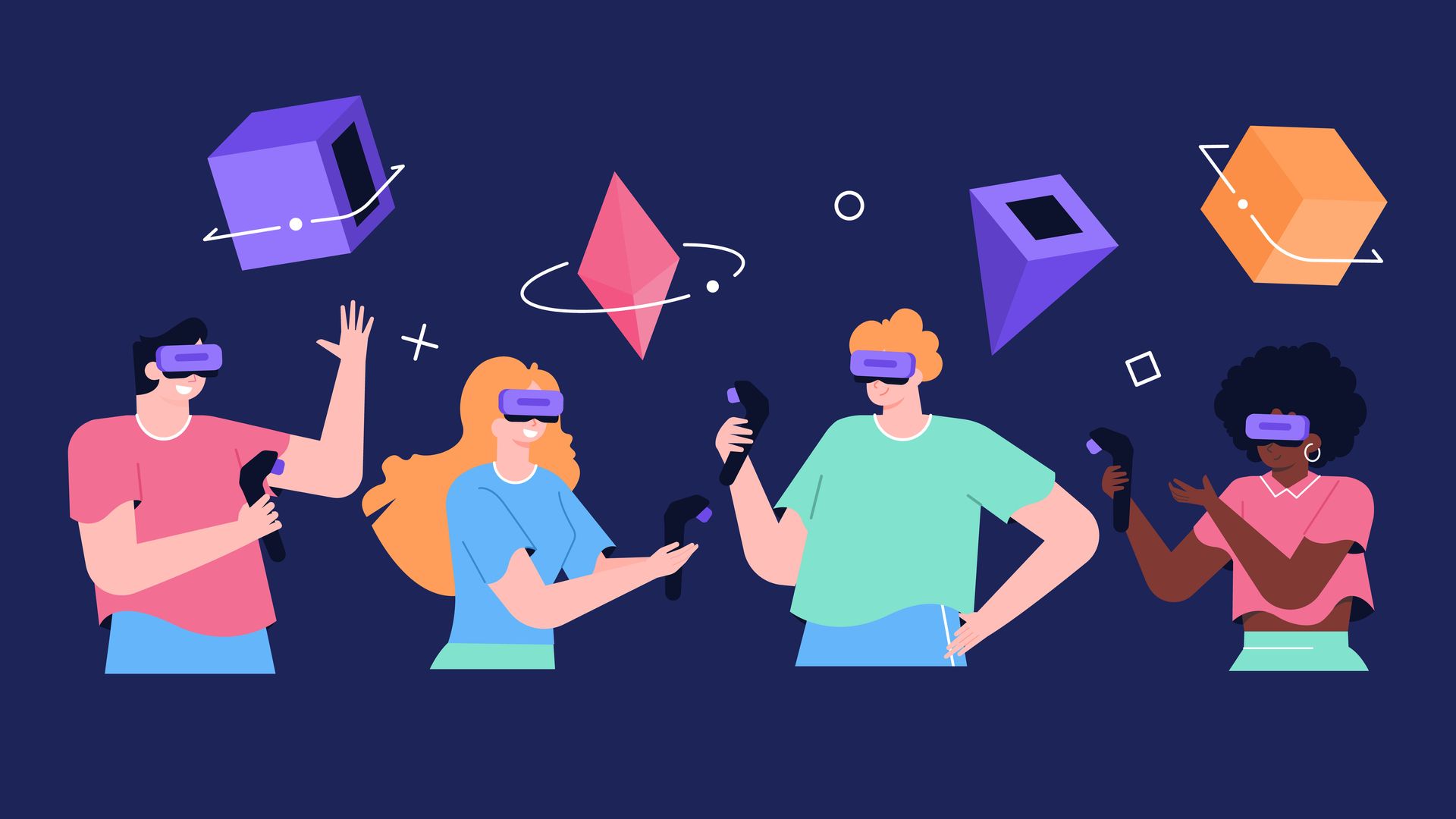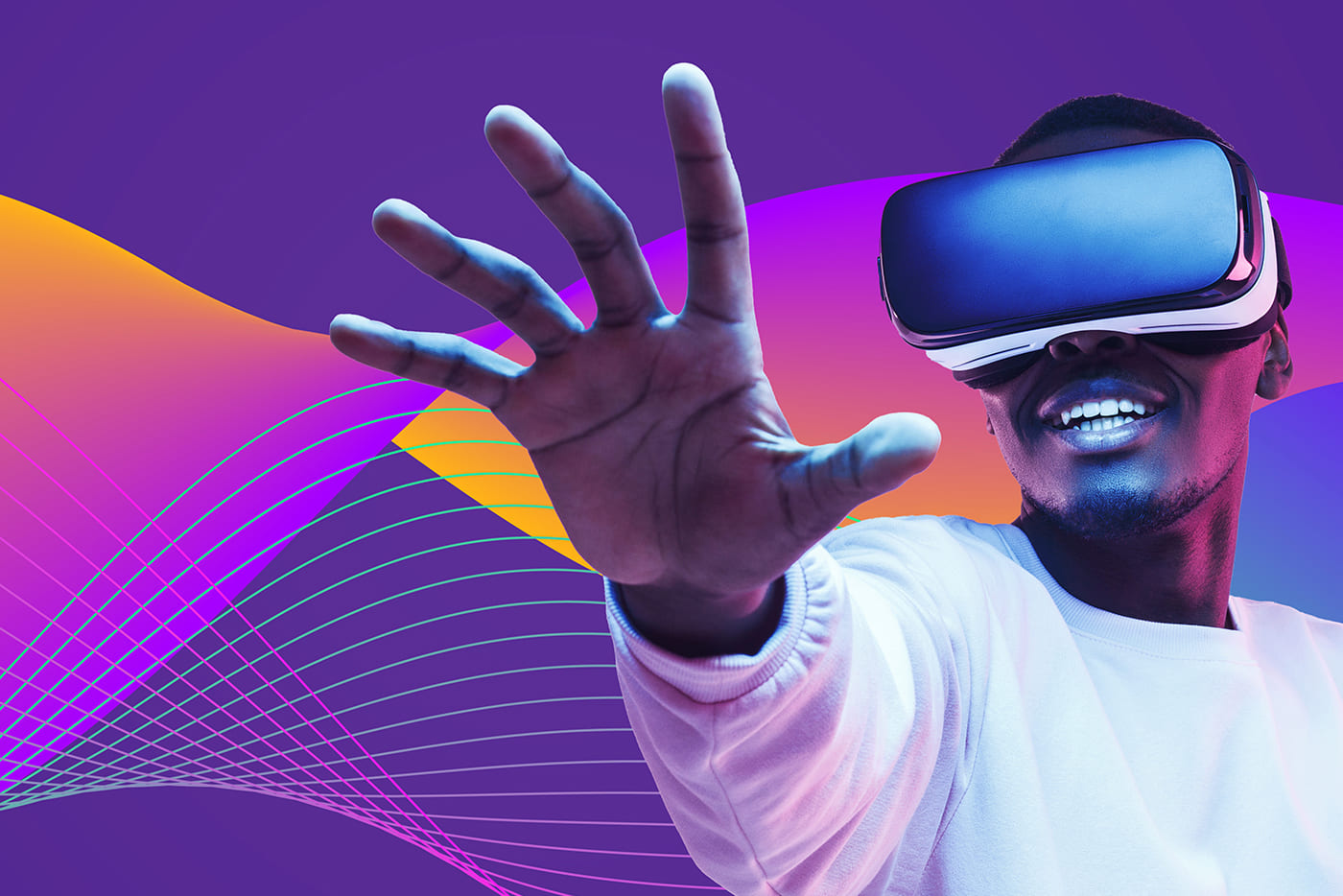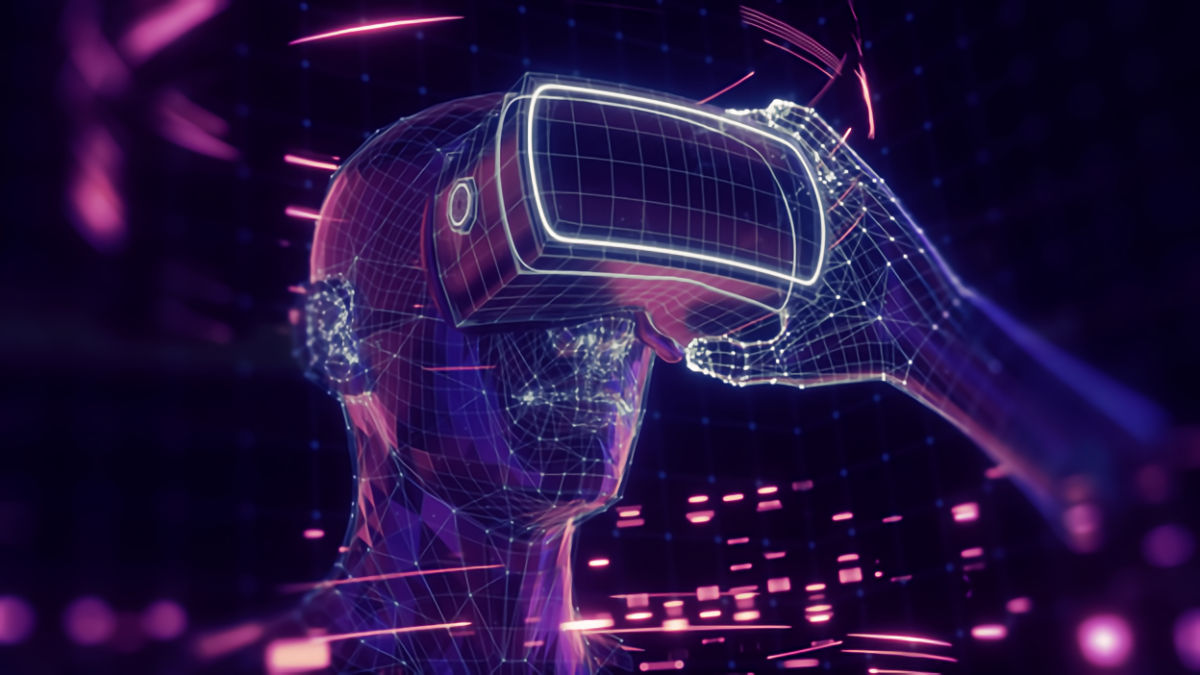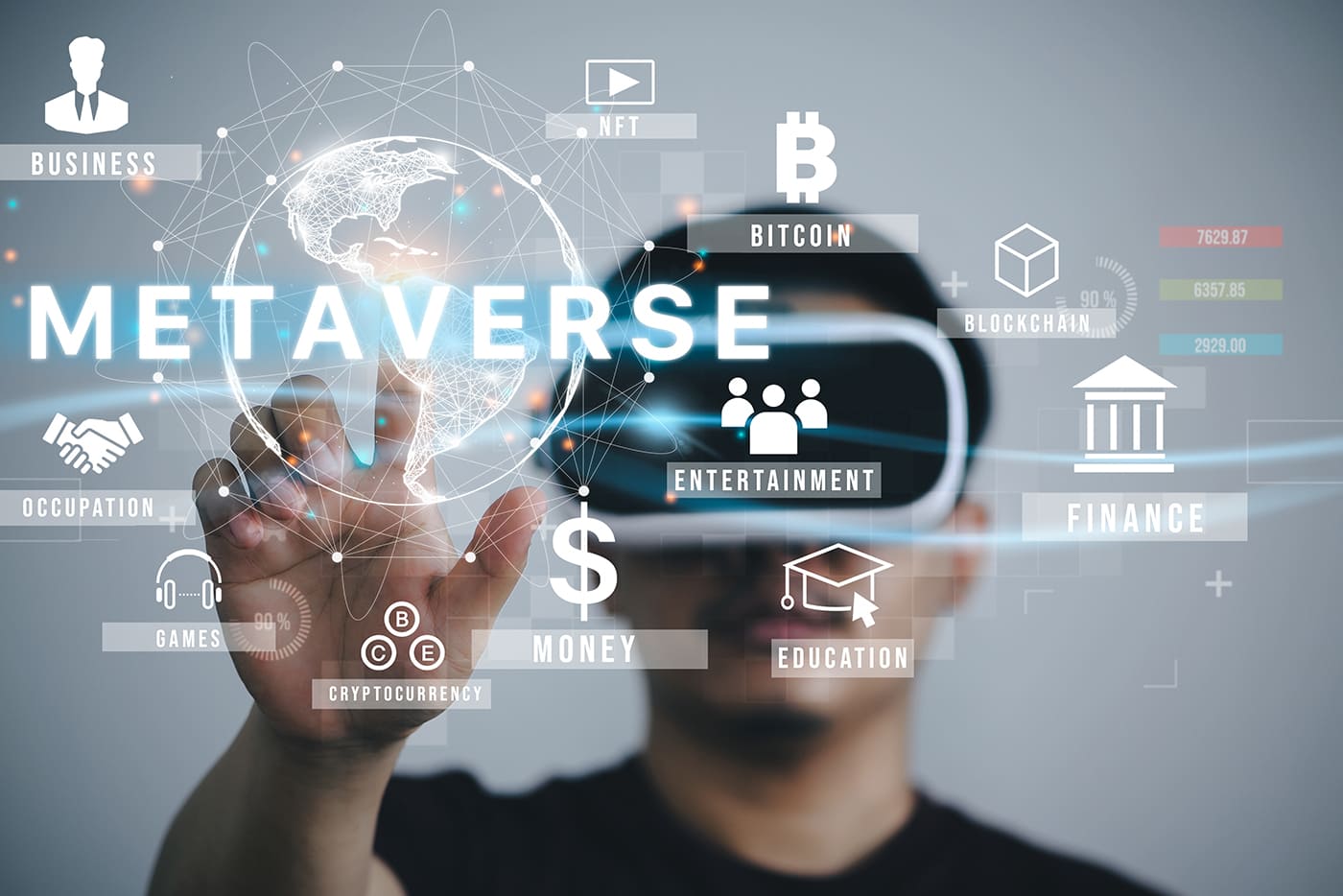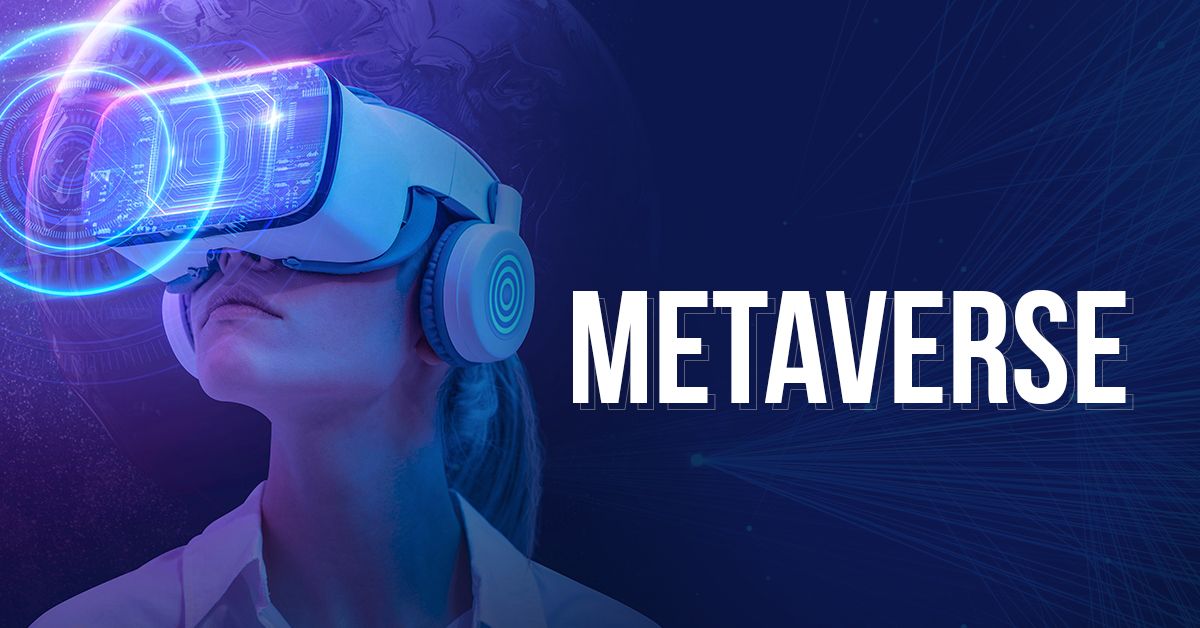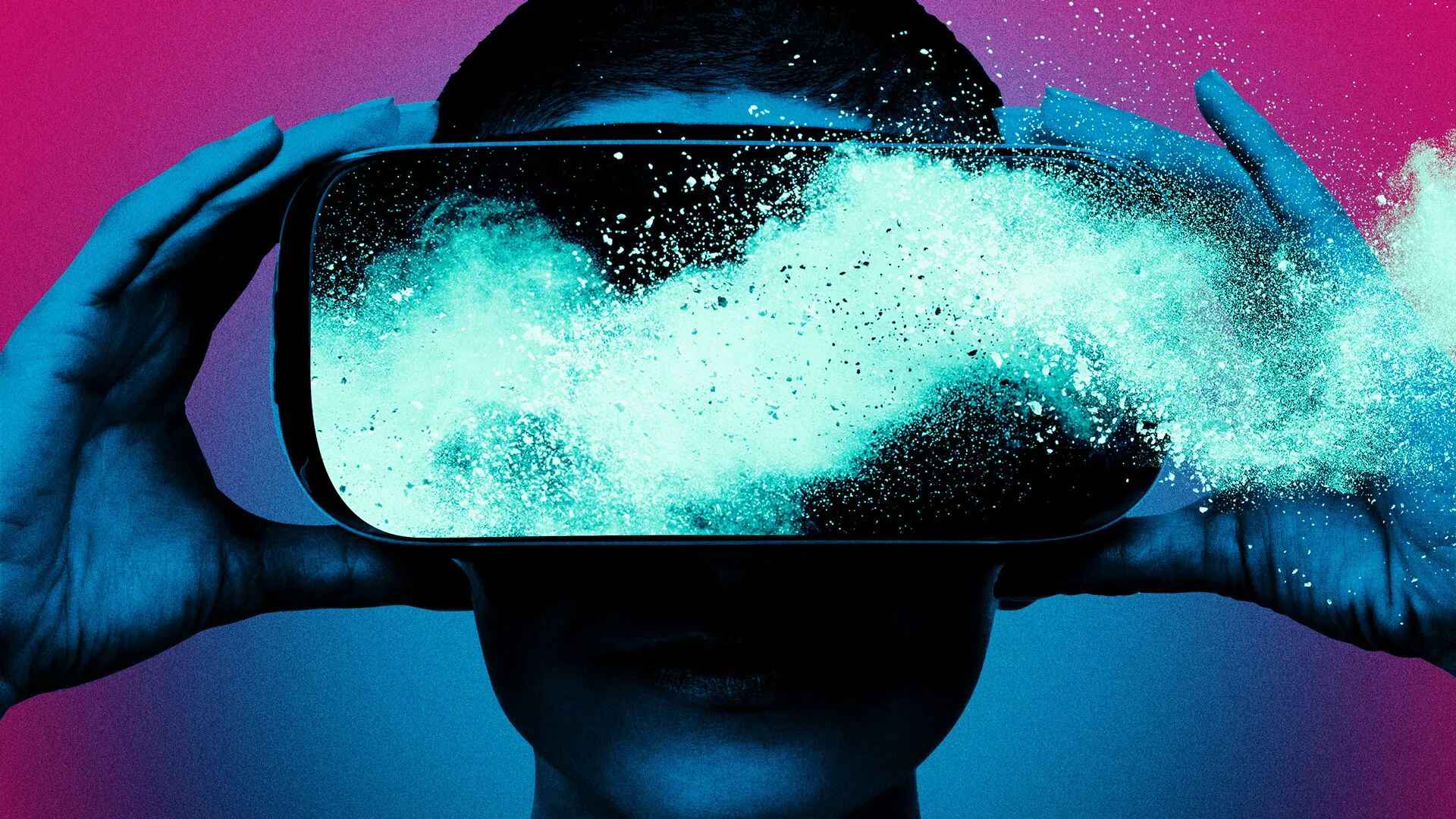Introduction
Welcome to the fascinating world of the Metaverse! This rapidly evolving concept has been generating a buzz across various industries and capturing the imaginations of people worldwide. The Metaverse represents a new frontier where virtual and physical realities seamlessly converge, creating interactive and immersive online environments.
The Metaverse is not just a distant vision of the future; it is already becoming a reality. As technology continues to advance, the possibilities of what can be achieved within this digital realm are expanding exponentially. From virtual reality (VR) to augmented reality (AR), from social media platforms to online gaming worlds, the Metaverse is transforming the way we interact, communicate, and even conduct business.
So, what exactly is the Metaverse? At its core, the Metaverse is a collective virtual space that encompasses a multitude of interconnected digital worlds. These worlds can be accessed through various devices, such as computers, smartphones, or specialized VR headsets. Within the Metaverse, users can explore, interact, create, and engage in a wide range of activities, similar to how we navigate the physical world.
The concept of the Metaverse originated from science fiction literature, notably in Neal Stephenson’s 1992 novel, “Snow Crash.” However, what was once a purely imaginative concept has now become a tangible possibility, thanks to advancements in technology. The Metaverse goes beyond the limited capabilities of the internet as we know it today, offering a much more immersive and interconnected experience.
One of the defining characteristics of the Metaverse is its ability to blend physical and digital elements seamlessly. Users can move between virtual worlds and interact with other users in real-time, creating a sense of presence and social interaction that goes beyond traditional online experiences. Whether it’s attending virtual events, exploring virtual museums, or collaborating on virtual projects, the Metaverse offers a level of engagement and participation that was previously unimaginable.
The potential applications of the Metaverse are vast and diverse. From entertainment and gaming to education, e-commerce, healthcare, and beyond, the Metaverse has the potential to transform numerous industries. For instance, in the gaming industry, the Metaverse can provide players with immersive experiences and new avenues for social interaction. In education, it can enable virtual classrooms and immersive learning environments. In healthcare, it can facilitate remote consultations and innovative therapies.
Definition of Metaverse
The Metaverse can be defined as a collective virtual space that encompasses a multitude of interconnected digital worlds. It is a concept that goes beyond the traditional notion of the internet, offering a more immersive and interactive experience where users can explore, interact, and create within virtual environments that mirror or expand upon the physical world.
At its core, the Metaverse is about blurring the boundaries between the digital and physical realms. It is a dynamic and evolving space where users can engage with each other and with virtual objects or entities in real-time. Unlike traditional online experiences, the Metaverse aims to create a sense of presence and social interaction that simulates the physical world.
One important aspect of the Metaverse is its interoperability. It is designed to be an open and interconnected space, allowing users to seamlessly navigate between different virtual worlds and platforms. This allows for an unprecedented level of freedom and creativity, enabling users to take their avatars, belongings, and even virtual currencies with them across different virtual environments.
The concept of the Metaverse is not limited to any specific technology or platform. It can encompass a range of virtual reality (VR), augmented reality (AR), and mixed reality (MR) experiences. Whether accessed through VR headsets, mobile devices, or computers, the goal is to create a unified and immersive experience regardless of the medium.
While the Metaverse is often associated with entertainment and gaming, its potential applications extend far beyond these sectors. It has the potential to revolutionize various industries, including education, healthcare, retail, and even productivity tools. It can facilitate collaborative workspaces, virtual classrooms, telemedicine, virtual shopping experiences, and much more.
It is essential to note that the Metaverse is still a rapidly evolving concept. As technology continues to advance, the boundaries of what is possible within the Metaverse will expand. The vision of the Metaverse is to create a digital space that is as diverse, dynamic, and interactive as the physical world we inhabit.
Origins of the Metaverse Concept
The concept of the Metaverse originated from the realm of science fiction, specifically from Neal Stephenson’s 1992 novel, “Snow Crash.” In the book, Stephenson describes a virtual reality-based cyberspace called the Metaverse, where users can interact and explore through customizable avatars.
Stephenson’s portrayal of the Metaverse laid the foundation for the concept, envisioning a place that goes beyond the limitations of traditional online experiences. In his vision, the Metaverse was a sprawling digital realm filled with virtual cities, landscapes, and social interactions.
While “Snow Crash” popularized the term “Metaverse,” the concept of a virtual reality-based world had been explored in previous works, including William Gibson’s “Neuromancer” and Vernor Vinge’s “True Names.” These early depictions paved the way for the Metaverse to become a prevalent concept in science fiction.
The term “Metaverse” itself is a combination of “meta” (meaning beyond or transcending) and “universe” (referring to a vast, interconnected space). This name captures the idea of a virtual reality-based realm that goes beyond the constraints of our physical universe.
Since the release of “Snow Crash,” the concept of the Metaverse has inspired countless technologists, futurists, and innovators. While virtual worlds, online games, and social media platforms existed prior to the term’s inception, the idea of a singular, interconnected digital universe took hold.
Technological advancements have played a significant role in bringing the Metaverse concept closer to reality. The development of virtual reality headsets, improved internet connectivity, and the emergence of blockchain technology have all contributed to the expansion and exploration of the Metaverse.
Today, the Metaverse is not merely a theoretical concept. It is a goal that many companies and organizations are actively working towards. Major tech giants, such as Facebook, Microsoft, and Epic Games, have invested heavily in developing platforms and technologies that align with the vision of the Metaverse.
The origins of the Metaverse concept can be traced back to the imaginations of science fiction authors. Through their visionary works, they sparked a collective desire for a digital realm that transcends the boundaries of our physical world. While still in its early stages, the Metaverse holds immense potential for reshaping how we experience and interact with the digital landscape.
Characteristics of the Metaverse
The Metaverse is characterized by several distinct features that set it apart from traditional online experiences. These characteristics shape the way users interact, explore, and create within the virtual realm. Understanding these key aspects is essential to grasp the potential and possibilities offered by the Metaverse.
1. Immersive and Interactive: The Metaverse offers a highly immersive environment, allowing users to feel a sense of presence as they navigate virtual worlds. Through technologies like virtual reality (VR) and augmented reality (AR), users can engage with the digital realm in a more visceral and interactive manner.
2. Centralized Digital Space: Unlike the fragmented nature of the current internet, the Metaverse aims to create a centralized digital space that connects various virtual worlds and platforms. This allows users to seamlessly move between different experiences within the Metaverse.
3. Interoperability: Interoperability is a fundamental aspect of the Metaverse. It enables users to carry their avatars, virtual assets, and even virtual currencies across different virtual worlds and platforms. This seamless transfer of data and identity fosters a unified and connected experience.
4. User-Created Content: The Metaverse empowers users to become creators themselves. Users can design and build their virtual spaces, objects, and experiences within the Metaverse. This democratization of content creation promotes innovation, fosters creativity, and enables diverse forms of expression.
5. Social Interaction: Social interaction is a core component of the Metaverse. Users can connect with others in real-time, engage in conversations, collaborate on projects, and attend virtual events. The Metaverse takes online socialization to a new level by providing a more lifelike and immersive environment for human connection.
6. Persistent and Evolving: The Metaverse is a persistent space that continuously evolves and grows. It is not bound by the constraints of time or physical limitations. Virtual worlds within the Metaverse can change, adapt, and expand to offer new experiences, ensuring an ever-evolving landscape for exploration.
7. Diverse Applications: The Metaverse has wide-ranging applications across various industries. From entertainment and gaming to education, healthcare, commerce, and more, the Metaverse provides a platform for innovative solutions and experiences. It has the potential to revolutionize how we learn, work, shop, and entertain ourselves.
The characteristics of the Metaverse combine to create a dynamic and immersive digital environment that goes beyond the limitations of the current internet. It is an exciting vision of a future where virtual and physical realities intertwine, offering endless possibilities for connection, collaboration, and exploration.
Applications of the Metaverse
The Metaverse has the potential to revolutionize various industries and reshape how we interact, learn, work, and entertain ourselves. Its applications extend far beyond gaming and entertainment, creating new opportunities for innovation and engagement. Here are some of the key areas where the Metaverse is expected to make a significant impact:
1. Entertainment: Gaming and entertainment are some of the most obvious and immediate applications of the Metaverse. Virtual reality (VR) games and immersive experiences within the Metaverse offer a new level of engagement and interactivity for players. Virtual concerts, movie screenings, and live performances can also be enjoyed by a global audience in the Metaverse.
2. Education: The Metaverse has the potential to transform the education landscape. Virtual classrooms and immersive learning environments can provide students with interactive and engaging educational experiences. It enables access to resources from around the world and encourages collaboration, making learning more inclusive and personalized.
3. Healthcare: The Metaverse can revolutionize healthcare by offering telemedicine services, virtual consultations, and remote medical training. Patients can explore virtual simulations of their conditions for better understanding, and doctors can collaborate in virtual environments to enhance diagnosis and treatment options.
4. Retail and Commerce: E-commerce experiences within the Metaverse can provide virtual shopping environments where users can try on virtual clothes, explore virtual stores, and make purchases using virtual currencies. Brands can create immersive experiences for customers, enhancing the online shopping experience and enabling personalized recommendations.
5. Collaboration and Workspaces: The Metaverse can redefine remote work and collaboration. Virtual workspaces allow distributed teams to collaborate in virtual environments, interact with virtual objects, and hold meetings in lifelike representations of real-world conference rooms. This fosters creativity, increases productivity, and reduces geographical constraints.
6. Social Platforms and Communication: Social media platforms in the Metaverse offer enhanced social interaction, allowing users to connect, communicate, and share experiences in more immersive ways. Virtual gatherings, events, and communities enable people from around the world to come together, fostering deeper connections and shared experiences.
7. Cultural and Historical Preservation: The Metaverse can serve as a platform for preserving cultural heritage and historical sites. Virtual museums and historical reconstructions allow users to explore and learn about different cultures and time periods. This can help in the conservation and accessibility of important cultural artifacts.
These are just a few examples of the potential applications of the Metaverse. As the concept evolves and technology advances, innovative use cases and opportunities will continue to emerge. The Metaverse holds the promise of transforming industries and enhancing our digital experiences in ways we have only begun to imagine.
Industries Impacted by the Metaverse
The Metaverse has the potential to disrupt and transform various industries, reshaping the way they operate and interact with customers. Its immersive and interconnected nature opens up new possibilities for innovation, collaboration, and monetization. Here are some industries that are expected to be significantly impacted by the Metaverse:
1. Gaming and Entertainment: The gaming industry is one of the most obvious beneficiaries of the Metaverse. Virtual reality (VR) games and immersive experiences within the Metaverse offer players a new level of engagement and interactivity. Additionally, the Metaverse provides a platform for new forms of entertainment, such as virtual concerts, live events, and interactive storytelling experiences.
2. Retail and E-commerce: The Metaverse has the potential to revolutionize the retail and e-commerce industry. Virtual shopping experiences, where users can explore virtual stores, try on virtual clothes, and make purchases using virtual currencies, offer a personalized and immersive approach to online shopping. Brands can create virtual showrooms and interactive marketing campaigns to enhance customer engagement and drive sales.
3. Education and Training: The Metaverse presents exciting opportunities for education and training. Virtual classrooms, immersive simulations, and interactive learning environments enable more engaging and personalized educational experiences. Students can explore virtual worlds, collaborate with peers, and access resources from around the globe, fostering a more inclusive and interactive learning environment.
4. Healthcare and Telemedicine: The healthcare industry can benefit from the Metaverse by leveraging telemedicine and virtual healthcare services. Patients can receive virtual consultations, access remote medical training, and explore virtual simulations of their health conditions for better understanding. The Metaverse enables healthcare professionals to collaborate in virtual environments, enhancing diagnosis, treatment options, and medical education.
5. Real Estate and Architecture: The Metaverse offers new possibilities for the real estate and architecture industries. Virtual property showcases, 3D walkthroughs, and virtual tours allow potential buyers and investors to explore properties remotely. Architects and designers can create virtual prototypes, visualize designs, and receive real-time feedback, streamlining the design and construction process.
6. Social Media and Communication: Social media platforms within the Metaverse offer enhanced social interaction and communication. Users can connect, share experiences, and interact with others in more immersive and lifelike ways. Virtual gatherings, events, and communities enable people from diverse backgrounds to come together, fostering deeper connections and shared experiences.
7. Advertising and Marketing: The Metaverse presents new opportunities for advertising and marketing strategies. Brands can create immersive and interactive virtual experiences, product placements within virtual worlds, and personalized advertising campaigns tailored to users’ virtual identities. This allows for more targeted and engaging advertising, driving customer engagement and brand loyalty.
The impact of the Metaverse extends beyond these industries, and its potential applications continue to expand. As the concept evolves and technology advancements continue, more industries will find innovative ways to leverage the Metaverse, revolutionizing how they operate, connect with customers, and deliver value.
Challenges and Concerns Surrounding the Metaverse
While the Metaverse holds immense promise, it also comes with its fair share of challenges and concerns. As this evolving concept becomes a reality, it is important to address these issues to ensure a safe, inclusive, and equitable digital environment. Here are some of the key challenges and concerns surrounding the Metaverse:
1. Accessibility and Inclusivity: One of the primary concerns is ensuring that the Metaverse is accessible and inclusive to all. It is crucial to overcome barriers such as cost, technological limitations, and accessibility for individuals with disabilities. Efforts must be made to ensure that marginalized communities are not left behind, and opportunities within the Metaverse are accessible to everyone.
2. Privacy and Data Security: The Metaverse collects vast amounts of user data, ranging from personal information to behavioral patterns. Safeguarding this data and protecting users’ privacy is paramount. Stricter regulations and robust security measures are necessary to prevent data breaches, unauthorized access, and misuse of personal information within the Metaverse.
3. Virtual Identity and Authenticity: In the Metaverse, users have virtual identities represented by avatars. Ensuring the authenticity and accountability of these virtual identities can be challenging. Measures need to be taken to prevent identity theft, impersonation, and harassment within virtual spaces. Verification mechanisms and ethical guidelines can play a crucial role in maintaining a secure and trustworthy virtual environment.
4. Digital Divide: The digital divide refers to the gap between those who have access to technology and connectivity and those who do not. Bridging this divide is essential to ensure that the benefits of the Metaverse are accessible to all. Efforts to improve internet infrastructure, provide affordable devices and connectivity, and address disparities in digital literacy are necessary to overcome this challenge.
5. Governance and Regulation: The Metaverse raises questions about governance and regulation. As a decentralized digital space, determining responsibility, enforcing rules, and addressing legal issues can be complex. Establishing frameworks for governance, addressing intellectual property rights, and creating mechanisms for dispute resolution are crucial for the long-term success and sustainability of the Metaverse.
6. Content Moderation: With user-generated content playing a significant role in the Metaverse, content moderation becomes essential. Balancing freedom of expression with preventing harmful or illegal content is a challenge. Developing effective content moderation systems, combating misinformation, and fostering a healthy and safe online environment are vital considerations for the Metaverse.
7. Ethical Considerations: The Metaverse raises ethical implications, from virtual economies and digital currencies to the impact on real-world businesses and societal norms. Ensuring ethical practices in areas such as data usage, user tracking, and virtual asset ownership is critical to prevent exploitation and promote fairness within the Metaverse.
Addressing these challenges and concerns requires collaboration between technology developers, policymakers, industry experts, and users. Open dialogue, proactive measures, and continuous evaluation of the impact of the Metaverse can help mitigate risks, foster inclusivity, and shape a positive future for this emerging digital realm.
The Future of the Metaverse
The Metaverse represents a significant shift in how we interact, communicate, and engage with the digital world. As technology continues to advance, the future of the Metaverse holds immense potential for innovation and transformation. Here are some key aspects that will shape the future of the Metaverse:
1. Advancements in Technology: Technological advancements will continue to drive the evolution of the Metaverse. As virtual reality (VR), augmented reality (AR), and other immersive technologies become more sophisticated and accessible, the quality of experiences within the Metaverse will improve. Advancements in artificial intelligence (AI), blockchain, and connectivity will also play a crucial role in shaping the future of the Metaverse.
2. Seamless Integration: The future of the Metaverse lies in seamless integration with our daily lives. As the line between the physical and digital worlds blurs, the Metaverse will become seamlessly integrated with our devices, environments, and interactions. It will be woven into our homes, workplaces, and even shared public spaces, providing a continuous and interconnected digital experience.
3. Collaboration and Interconnectivity: Interconnectivity will be a fundamental aspect of the Metaverse. Users will be able to seamlessly move between virtual worlds, platforms, and devices, taking their digital identities, assets, and experiences with them. Collaboration within the Metaverse will become more prevalent, allowing users to work, learn, and create together across distances.
4. Diverse and Authentic Experiences: The future of the Metaverse will embrace diversity and authenticity. Users will have the opportunity to explore an ever-expanding range of virtual worlds and experiences tailored to their interests and preferences. Content creators will have the freedom to express their creativity and offer unique experiences within the Metaverse, fostering a rich and vibrant digital ecosystem.
5. Digital Economy and Virtual Asset Ownership: The Metaverse will provide new avenues for economic growth and virtual asset ownership. Virtual currencies, digital marketplaces, and virtual economies will thrive within the Metaverse. Users will have the ability to monetize their creations, trade virtual assets, and engage in economic activities, creating new opportunities for entrepreneurship and commerce.
6. Ethical and Inclusive Design: The future of the Metaverse will prioritize ethical and inclusive design principles. Efforts will be made to address issues such as privacy, security, harassment, and accessibility. User safety, protection of personal data, and promoting diversity and inclusion will be integral parts of the design and operation of the Metaverse.
7. Integration with Real-World Applications: The Metaverse will increasingly integrate with real-world applications and industries. From remote work and telemedicine to virtual events and global collaborations, the Metaverse will bridge physical and digital experiences. Industries such as healthcare, education, retail, and entertainment will find innovative ways to leverage the Metaverse, enhancing their offerings and creating new business opportunities.
The future of the Metaverse is a convergence of technology, creativity, and human interaction. As it continues to evolve, it has the potential to reshape how we live, work, learn, and connect with one another. Through collaboration, responsible design, and a focus on user experience, the future of the Metaverse holds immense promise for creating a more immersive, interconnected, and inclusive digital future.
Conclusion
The Metaverse represents an exciting and rapidly evolving concept that is poised to transform the way we interact with the digital world. From immersive gaming experiences to virtual classrooms, the possibilities of the Metaverse are vast and diverse. As technology continues to advance, we can expect to see significant advancements in the development and adoption of the Metaverse in various industries.
However, with these exciting opportunities come challenges and concerns that must be carefully addressed. Ensuring accessibility, inclusivity, privacy, and ethical practices within the Metaverse are essential for creating a safe and equitable digital environment. Collaboration between technology developers, policymakers, and users will play a crucial role in shaping the future of the Metaverse.
The future of the Metaverse lies in seamless integration with our daily lives, providing a connected and immersive digital experience. As the line between the physical and virtual realms blurs, the Metaverse will offer diverse and authentic experiences tailored to individual preferences. Collaboration and interconnectivity will enable us to work, learn, and create together across distances, fostering a more global and collaborative society.
It is important to remember that the Metaverse is still a developing concept, continually shaped by technological advancements, user feedback, and societal considerations. As we move forward, it is crucial to prioritize ethical design, user safety, and the protection of personal data. By doing so, we can harness the potential of the Metaverse while also ensuring a sustainable and responsible digital future.
The future of the Metaverse is bright, promising exciting advancements, opportunities for innovation, and new ways of connecting with others. With careful stewardship, the Metaverse has the potential to positively impact various industries, enhance our digital experiences, and create a more inclusive and interconnected world.







